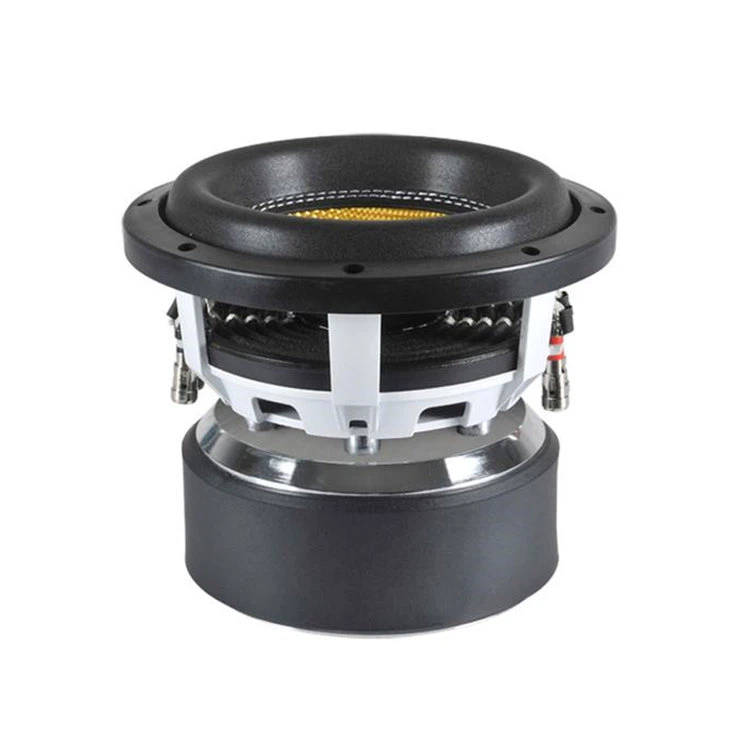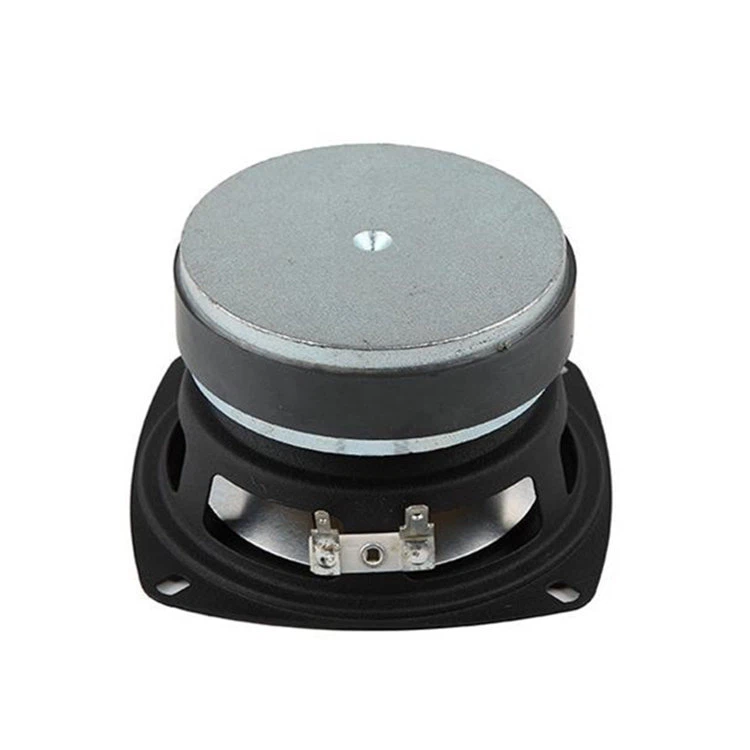What data should I look for when comparing woofer magnets?
 Jun 26, 2025|
Jun 26, 2025| When comparing woofer magnets, there are several key data points that you should consider. As a Woofer Magnet [/ferrite-magnet/speaker-magnet/woofer-magnet.html] supplier, I've had the opportunity to work with a wide range of magnets and understand the importance of these factors in determining the performance of a woofer.
Magnetic Field Strength
One of the most critical data points is the magnetic field strength. Measured in gauss or tesla, the magnetic field strength directly impacts the force exerted on the voice coil of the woofer. A stronger magnetic field allows for greater control over the movement of the diaphragm, resulting in more accurate sound reproduction.
For example, if you're comparing two magnets, and one has a magnetic field strength of 10,000 gauss while the other has 8,000 gauss, the former is likely to provide better performance in terms of bass response and overall sound quality. In general, higher-end woofers often utilize magnets with stronger magnetic fields to achieve a more powerful and detailed bass output.
Coercivity
Coercivity is another important parameter. It measures the ability of a magnet to resist demagnetization. A magnet with high coercivity is less likely to lose its magnetic properties over time, especially when exposed to external magnetic fields or high temperatures.
When comparing woofer magnets, a higher coercivity value is generally preferable. This ensures that the magnet maintains its performance throughout the lifespan of the woofer. For instance, in a car audio system where the woofer may be exposed to various electromagnetic interferences, a magnet with high coercivity will be more reliable and consistent in its operation.
Remanence
Remanence refers to the residual magnetic flux density that remains in a magnet after it has been magnetized and the external magnetic field is removed. It is an indication of the magnet's ability to retain its magnetization. A higher remanence value means that the magnet can produce a stronger magnetic field for a given volume.
When choosing a woofer magnet, a higher remanence can lead to a more efficient conversion of electrical energy into mechanical energy, resulting in better sound output. For example, in a home theater system, a woofer with a magnet of high remanence can deliver a more immersive bass experience, as it can move the diaphragm more effectively.
Size and Shape
The physical size and shape of the magnet also play a significant role. The size of the magnet affects its magnetic field distribution and the overall power handling capacity of the woofer. A larger magnet generally has a stronger magnetic field, but it also adds weight and cost to the woofer.


In terms of shape, different shapes can be optimized for different applications. For example, a ring-shaped magnet may be more suitable for a compact woofer design, while a rectangular magnet might be used in a larger, more powerful woofer. When comparing magnets, you need to consider the physical constraints of your woofer design and how the size and shape of the magnet will fit into it.
Temperature Stability
Temperature can have a significant impact on the performance of a magnet. As the temperature increases, the magnetic properties of a magnet can degrade. Therefore, it's important to look at the temperature stability data of the woofer magnets you're comparing.
Some magnets are designed to have better temperature stability than others. For example, in a professional audio system that may be used in a hot environment, such as a concert venue during a summer concert, a magnet with high temperature stability will ensure that the woofer maintains its performance even under elevated temperatures.
Cost
Of course, cost is always a consideration. While high-performance magnets with excellent magnetic properties may offer superior sound quality, they also come at a higher price. You need to balance the performance requirements of your woofer with your budget.
As a supplier, we offer a range of Woofer Magnets [/ferrite-magnet/speaker-magnet/woofer-magnet.html] with different performance levels and price points. For those on a tight budget, we have more cost-effective options that still provide decent performance. On the other hand, for high-end audio enthusiasts or professional audio applications, we can supply magnets with top-of-the-line magnetic properties.
Specific Applications
Different applications may require different types of magnets. For example, in a home stereo system, a 10 Inch Speaker Magnet [/ferrite-magnet/speaker-magnet/10-inch-speaker-magnet.html] may be a popular choice for its balance of size, power, and sound quality. It can provide a good amount of bass for a medium-sized room.
In a subwoofer system designed for a high-energy dance club or a home theater with a large room, a Subwoofer Impulse Triple Magnet [/ferrite-magnet/speaker-magnet/subwoofer-impulse-triple-magnet.html] may be more appropriate. These triple magnets are designed to provide a very powerful and deep bass output, suitable for applications where a high level of bass impact is required.
Material Composition
The material composition of the magnet is also crucial. Common materials used for woofer magnets include ferrite, neodymium, and alnico. Each material has its own unique properties.
Ferrite magnets are relatively inexpensive and have good temperature stability. They are widely used in many consumer audio applications. Neodymium magnets, on the other hand, are very strong and lightweight. They are often used in high-end audio systems where space and weight are at a premium. Alnico magnets have a warm, vintage sound and are sometimes used in classic audio equipment.
When comparing woofer magnets, you need to consider the material composition based on your specific requirements. For example, if you're looking for a cost-effective solution with good performance, ferrite magnets may be a good choice. If you need a very powerful and lightweight magnet for a high-end application, neodymium magnets might be more suitable.
Conclusion
In conclusion, when comparing woofer magnets, you need to consider a variety of data points, including magnetic field strength, coercivity, remanence, size and shape, temperature stability, cost, specific applications, and material composition. By carefully evaluating these factors, you can choose the best magnet for your woofer to achieve the desired sound quality and performance.
If you're interested in learning more about our Woofer Magnets [/ferrite-magnet/speaker-magnet/woofer-magnet.html] or have specific requirements for your woofer design, we're here to help. Our team of experts can provide you with detailed information and guidance to ensure that you make the right choice. Whether you're a hobbyist building your own audio system or a professional audio manufacturer, we look forward to discussing your needs and working with you to find the perfect woofer magnet solution. Contact us to start the procurement discussion and take your audio experience to the next level.
References
- "Magnetics Handbook" - A comprehensive guide on magnetic materials and their properties.
- "Audio Engineering Society Journal" - Contains research and articles on the latest developments in audio technology, including woofer magnet design.

